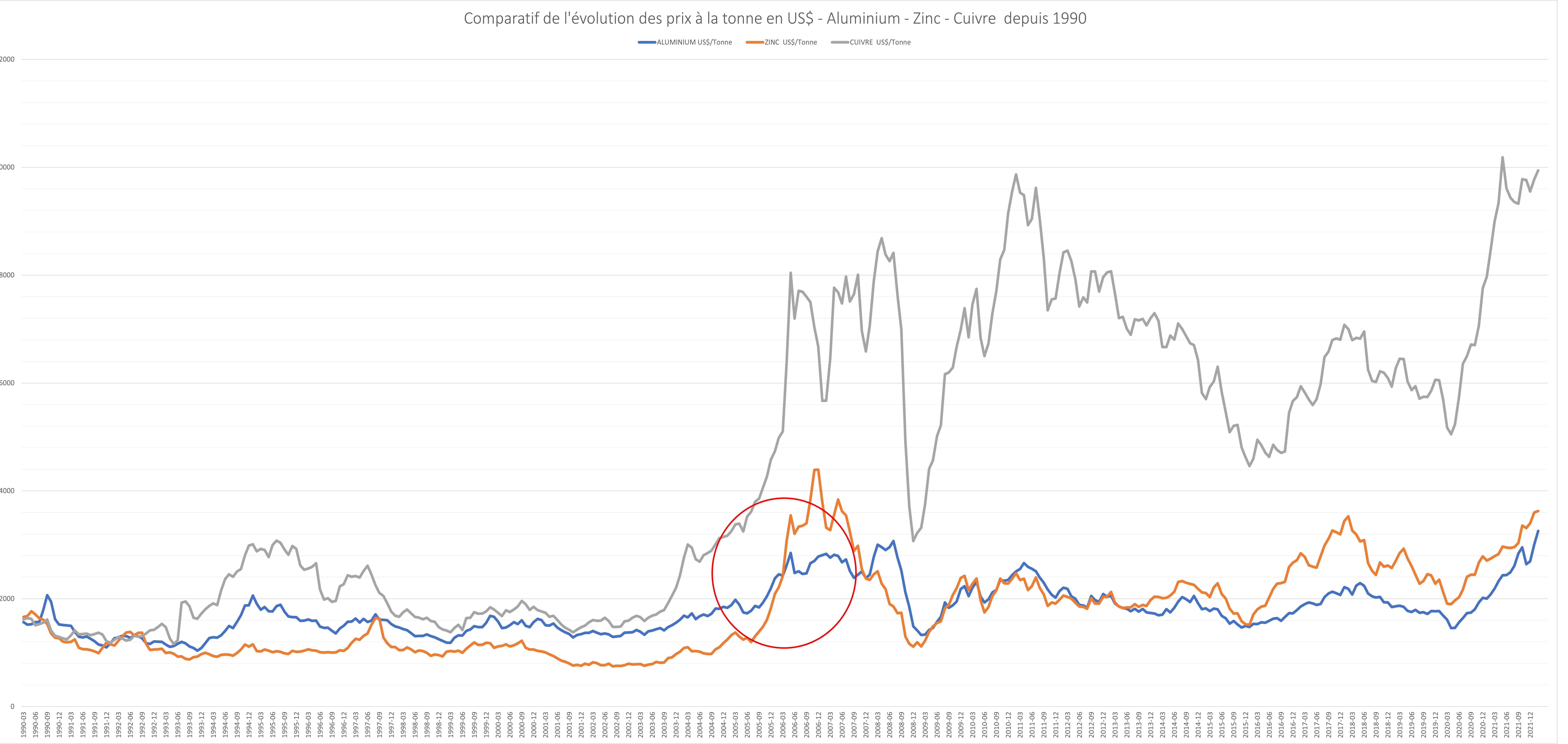Protecting yourself from rising primary materials
In recent decades, the choice of material for a new part design is essential for contain its price in the future. Indeed, the known world reserves of some metals are limited and demand is increasing: they will inevitably appreciate and sometimes even be in short supply.
We present a small comparison of three metals with very different characteristics and covering the most common non-ferrous metals.
First of all, it is clear that the choice of an alloy will be obvious and mandatory if you need a major characteristic of it. Thus copper, an excellent conductor, will be required to pass high electrical impedances. But aluminium, also a good conductor, can be sufficient for medium currents or you can increase the cross-sections to achieve your objective.
It is hard to imagine that there are only three
decades in the early 1990s, that these metals had similar prices per tonne. Traditionally at that time zinc alloys were the cheapest of the three. In 2005, copper and zinc, which have global reserves of much lower than aluminium prices that start to diverge from the latter and will have a stronger rise and increased volatility. From this date onwards, under the pressure of demand, copper will soar and the price of zinc will remain predominantly above that of aluminium.
This may seem obvious, but when developing a new part, the price of the metal must be taken into account is not per kilo but per litre. Indeed, what characterises a room is its shape which can be adapted according to the metal chosen. It can be seen from the following curve that the density accentuates the price differences over the years.
Since what constitutes the price of metals is the ratio between supply and demand,we can expect the current trend to continue in the future with an aggravating factor which is the speculation of financial actors who will not fail to exploit this situation.
In addition, the metals impose a processing cost which is highly variable and should not be neglected. It is therefore necessary to assess your need to make the right choice of material.
Source of monthly Insee values by metal.
- https://www.insee.fr/fr/statistiques/serie/010002041#Telechargement
- https://www.insee.fr/fr/statistiques/serie/010002052#Telechargement
- https://www.insee.fr/fr/statistiques/serie/010002072#Telechargement




